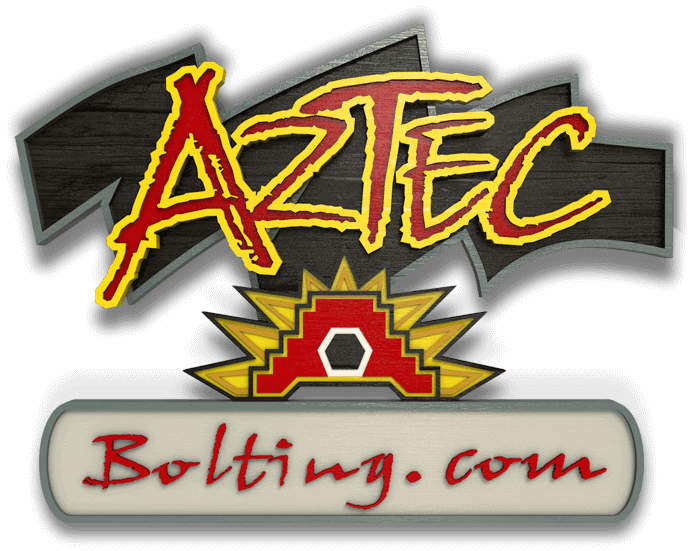Wind energy is powering the future, but every turbine’s reliability is rooted in something simple: the integrity of its bolted connections. Secure bolting is about assembly, but also about maximizing uptime, minimizing risk, and delivering safe, consistent renewable power.
Aztec is a leading expert in industrial bolting with decades of experience supporting wind energy projects. In this article, we share the industry’s essential best practices to help you keep wind turbines safe, stable, and long-lasting.
Why Bolting Excellence Matters in Wind Energy
Wind turbines face some of the harshest operating conditions in the energy sector:
- Constant cyclic loads and vibration
- Exposure to temperature extremes, moisture, and corrosion
- Large bolt sizes and high-load connections in hard-to-access areas
Each bolt, whether at the tower base, nacelle, or blade connection, must withstand years of stress. A single bolting failure can lead to costly downtime, operational hazards, and expensive repairs. That's why investing in correct bolting technique and equipment is essential in every phase of wind turbine assembly and maintenance.
Bolting Best Practices for Wind Energy Projects
Guarantee Precision Torque and Tensioning
Correct preload is critical for structural integrity. Whether you're securing a gearbox, a hub flange, or a tower segment, the fastener must deliver consistent clamping force without loosening over time.
- Torque Tightening applies rotational force to achieve preload.
- Hydraulic Tensioning stretches the bolt axially, allowing the nut to be snugged down without torsion, ideal for large-diameter and high-load applications.
In both methods, accuracy matters. Aztec recommends always following manufacturer specifications and applicable ISO standards when tightening, using sequential cross-patterns to ensure uniform load distribution.
Lubrication is also crucial. Improper lubrication can cause over-tightening or false torque readings, so match the lubricant to bolt specifications for optimal results.
Select Specialized Tools and Effective Calibration Methods
The right tools make all the difference in energy projects that demand high performance and accuracy. Specialized bolting tools must endure rough terrain, vertical climbs, and long shift cycles.
Aztec recommends:
- CP86 Cordless Torque Wrenches: portable, battery-powered accuracy. Ideal for fast, repeatable results in tight or elevated workspaces.
- S-Series Hydraulic Torque Wrenches: robust, heavy-duty performance for critical torque applications in nacelles and base towers.
Tool calibration is a non-negotiable. Aztec provides ISO 17025-accredited calibration services, helping you maintain peak tool performance and meet OEM and safety standards.
Follow Provenly Safe Installation Procedures
For maximum performance and safety, follow these proven installation techniques:
- Use a cross-pattern or star-pattern sequence to distribute load evenly across flanges.
- Apply proper lubrication and match the lubricant to the bolt type and torque specification to avoid over- or under-tightening.
- Install washers as required, especially for notch-sensitive fasteners, to prevent stress concentrations.
Aztec's training and supervision services ensure crews consistently follow these practices in the field.
Perform Routine Maintenance and Inspection
Bolts in wind turbines must be routinely checked due to vibration, thermal expansion, and dynamic loading. To ensure the reliability of wind turbines:
- Scheduled torque verification for tower base bolts and critical components.
- Visual inspections for corrosion, wear, missing fasteners, or signs of loosening.
- Detailed record-keeping to track tool performance, torque history, and service intervals.
Aztec supports preventive maintenance through both tools and digital logging systems.
Proactive Bolting Strategies: Maintenance, Support, and Training
Wind turbines operate in dynamic environments where minor issues can escalate quickly, especially when fasteners are involved. That’s why a proactive approach to bolting is essential.
Even with all best practices in place and preventive maintenance performed, bolting challenges can still arise unexpectedly, particularly during installations, heavy weather, or scheduled turnarounds. That’s why having access to reliable on-site support matters.
Skilled technicians who can quickly perform diagnostics, calibrations, or emergency torque corrections make the difference between a minor delay and a prolonged shutdown.
But tools don’t operate themselves, so a well-trained crew is just as vital as well-calibrated equipment. Proper installation sequences, safety protocols, and understanding torque and tension requirements all impact the integrity of a bolted joint, especially in high-risk, high-altitude turbine work.
Building a bolting strategy around these three pillars: maintenance, support, and training, reduces risk, improves safety, and maximizes uptime. The best bolting practices start long before torque is applied and continue long after the wrench is put away.
Build Lasting Reliability With Smarter Bolting
As wind energy scales to meet global demand, the expectations for safety, uptime, and reliability are higher than ever. And in this environment, bolting is a strategic investment in performance and long-term asset integrity.
At Aztec, we bring decades of field-proven expertise, precision-engineered tools, and ISO-accredited services to wind energy projects across the country. Whether you need advanced torque and tensioning systems, on-site emergency support, or expert-led training, we’re here to help you build smarter, safer, and more resilient wind power infrastructure.
Let’s talk about how Aztec can support your next wind project with tools, services, and strategies built for the unique demands of renewable energy. Talk to our experts today for tailored solutions and trusted expertise in wind energy bolting.





